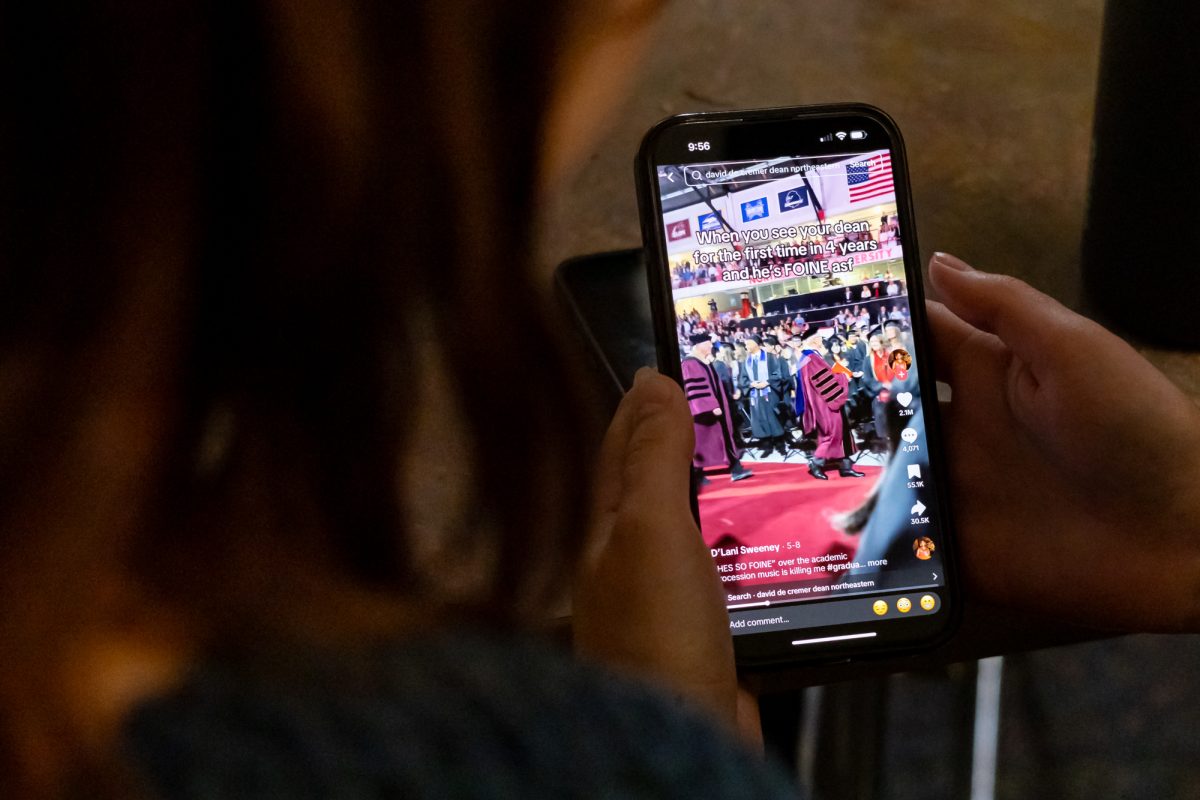
By Dani Wong, News Correspondent
“Laughter” and “meditation” aren’t typically used in the same sentence. The latter term conjures up ideas of relaxation and Zen – a time to take a break and tune into one’s inner conscious. But laughter meditation takes a different approach on the traditional practice.
Laughter meditation classes vary based on instructor and size, but there are some common elements in the weekly exercises at the Sacred Space. Jason Jedrusiak, a guide at Northeastern’s Funny Friday laughter meditation sessions and 2006 Northeastern graduate said these classes are generally very interactive; students should expect to connect with one another while exploring a series of different laughing techniques.
One exercise involves making animal noises, lying on another person’s stomach while laughing loudly, and visualizing a funny moment from the past.
Participants supporting each other is a big part of each class, Jedrusiak said.
“Laughter is very contagious, so everyone kind of helps each other get into the proper state of mind,” he said. “For example, one exercise involves us shaking hands with each other and just laughing out loud. It has a very cathartic effect.”
Jedrusiak said sometimes the most rewarding sessions actually start with a forced laugh.
“Laughter is a very common human reaction to things,” Jedrusiak said. “There are different types of laughter, but they all produce a relaxing chemical in the brain.”
The idea behind the Funny Friday classes is that laughter has a healing and restorative effect.
The practice originated in India and slowly spread to other countries like the U.S. It is increasing in popularity as it makes its way into meditative centers across the nation.
Laughter meditation differs from regular meditation in the sense that completely clearing the mind isn’t the main technique used to achieve a state of calm.
Jedrusiak said he became involved with meditation about two years ago, coming across laughter yoga and meditation through Yin Yoga, a type of yoga that targets the connective tissues.
“In reality, yoga is a meditation in itself,” he said. “Meditation can be very beneficial to students. It gives them a moment to stop and take a breath.”
Philip Huntley, a third year English major, has attended Northeastern University’s laughter meditation sessions on multiple occasions. He said he was prompted to try the technique by a peer.
“One friend said she tried the laughter meditation and that it gave her a great, lighthearted start to the weekend, so I was more than willing to try it out,” he said.
Huntley also practices traditional contemplative meditation, which he said is more focused on individual experience.
“Contemplative meditation has given me amazing psychological and physiological results,” he said. “Both forms can give a body high and unmistakable lightness, but the laughter meditation had everyone literally tingling with energy that tickled us to keep laughing and rejoicing on a physical level that I haven’t had with the contemplative style.”
Huntley said the Sacred Space provides an inviting, non-judgmental environment where students can open up and be themselves.
“Laughter meditation is also a great chance and atmosphere to let everything joyous and silly and beautiful about your character out that normal social limits discourage,” he said.
The secret behind the success of laughter meditation, Jedrusiak said, lies within the science of natural emotions.
“Let go of the idea that it has to be a real laugh,” he said. Sometimes, you have to fake it at first. But eventually, it will become very real.”
Participants leave the sessions feeling optimistic, relaxed and ready to tackle anything, Jedrusiak said.
“I absolutely recommend it as an alternative to contemplative meditation, or just as a chance to be silly with friends in an upbeat environment and set an awesome tone for the weekend,” Huntley said.
Jedrusiak said laughter meditation also imparts a light and positive aura, melting any stress away.
“We often get caught up in our own little worlds, without taking the time to acknowledge each other,” Jedrusiak said. “It’s important to remember that we’re all really connected at the end of the day. When it comes down to it, we all live in the same world.”








